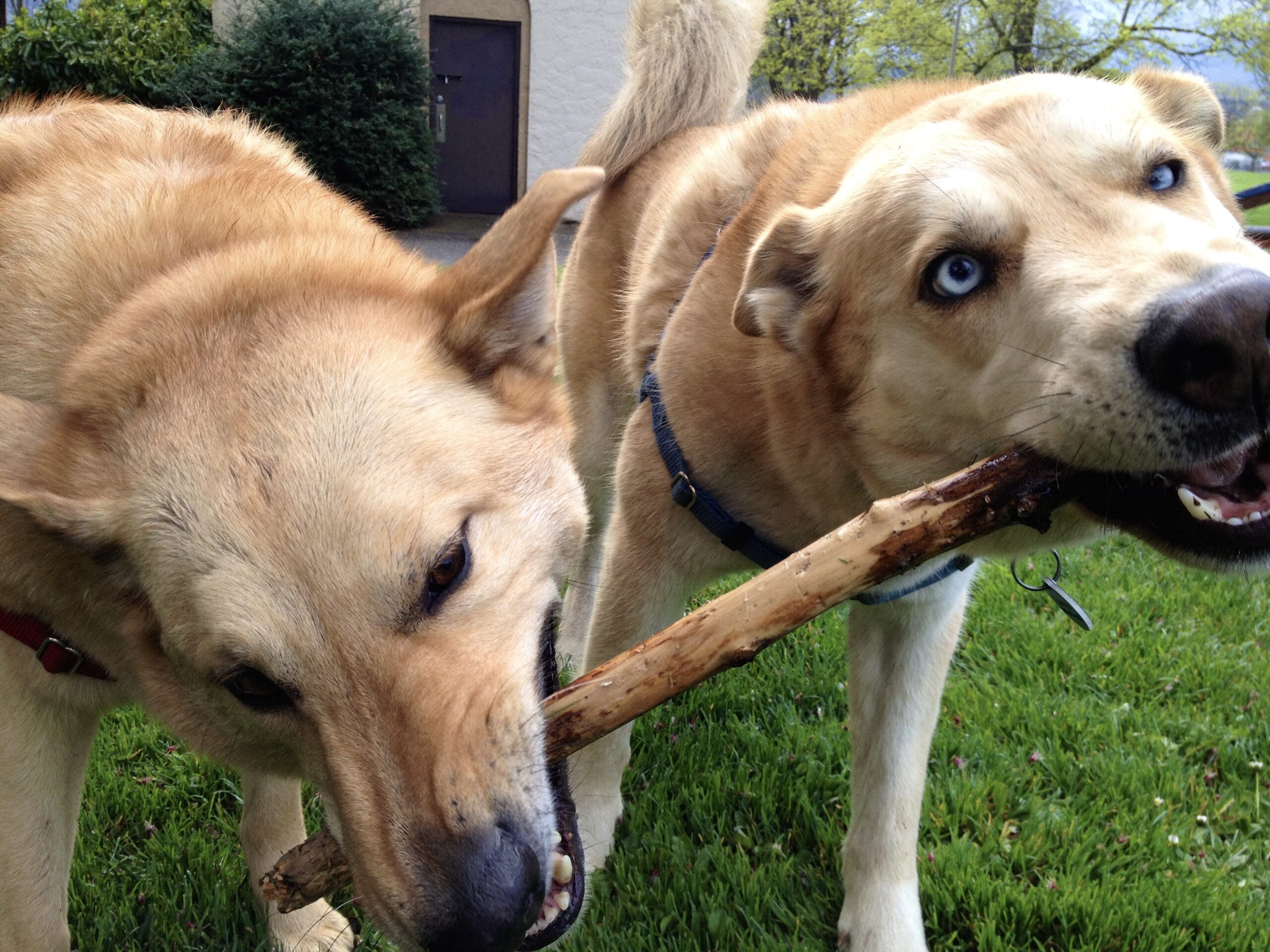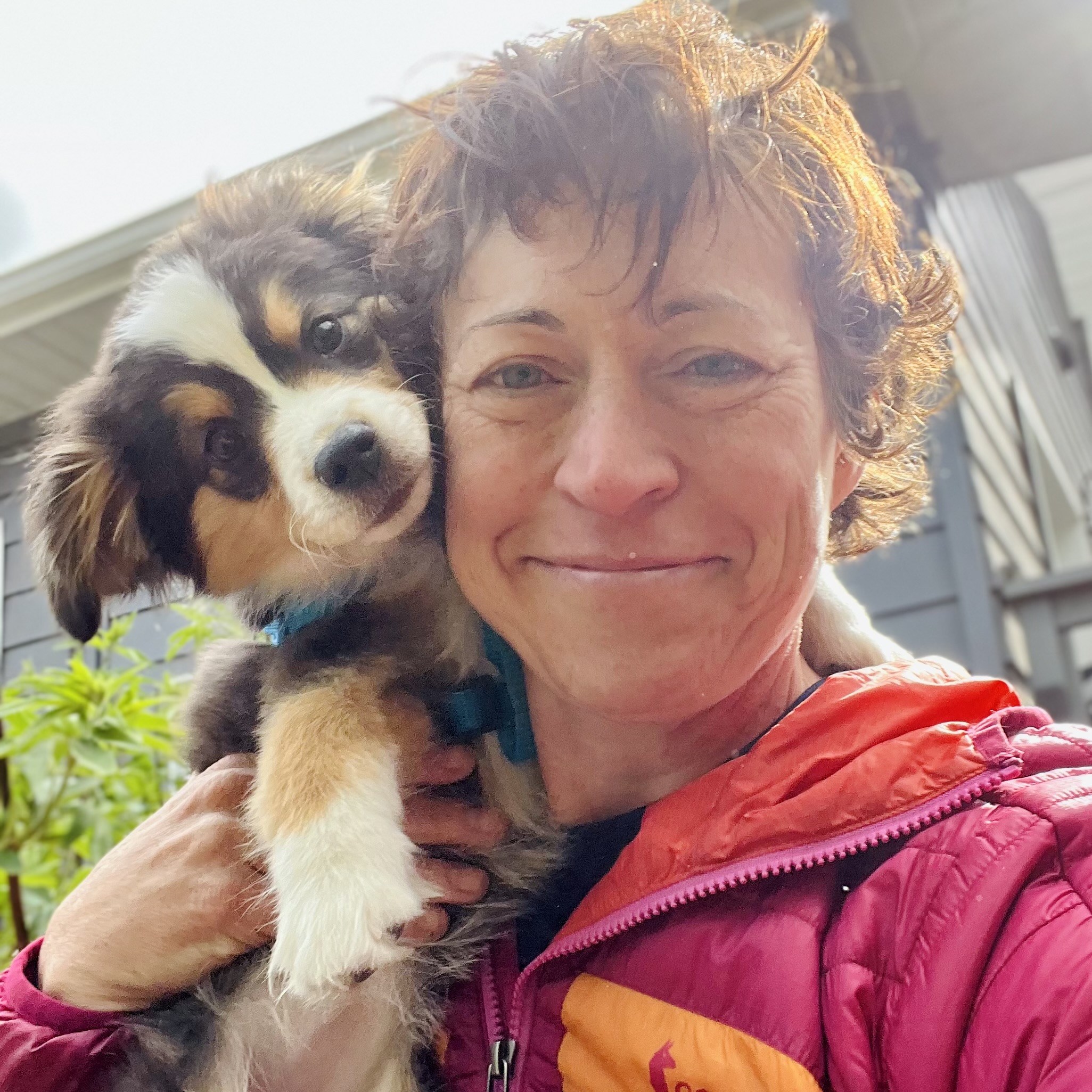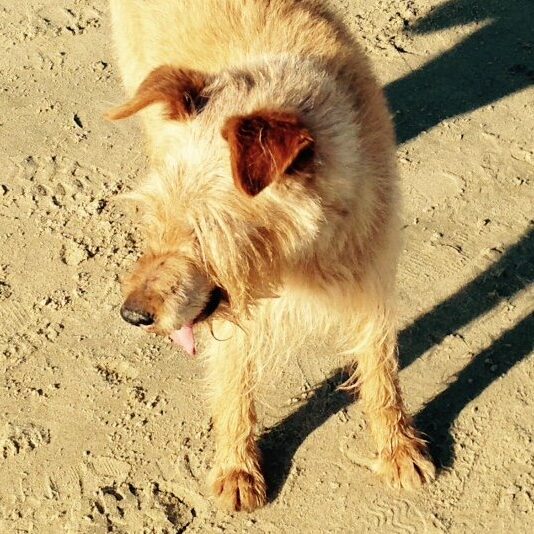From Automatons to Sentience
by Kerry Ryan, Certified Professional Dog Trainer and Family Dog Mediator
While modern psychology and its associated social sciences have been a part of the human zeitgeist for over a century, it’s only relatively recently that we have applied these fields to the study of canine cognition. There is such a strong resolve in the scientific community to steer clear of anthropomorphism that we have forgotten that we, too, are animals. Several of the things that may make us feel special—emotions, memory, theory of mind, communication—are not actually markers of our humanness, but instead signify that we are a highly social mammal.
We so strongly set our species apart from “animals,” in fact, that discourse is often at the mercy of a kind of reverse-anthropomorphization, where we regard non-human animals as a kind of automata. While we have come a long way from Descartes’ notion of the “animal machine”— in which he posited that animals are merely an assembly of mechanical pieces and do not have consciousness or thought—we still get rather stuck in thinking humans are overwhelmingly unique and special. We have always had extreme difficulty acknowledging that we are a part of the global community, and not the sole species of importance.
The truth is, though, that while we are a highly unique species because of our large brains and nuanced verbal communication, we are not unique for possessing the capability for advanced cognition or for inhabiting a rich emotional landscape.
In 1936, psychologist Karl Lewin, regarded as the founder of social psychology, argued that behavior never operates in a vacuum. Instead, he said, behavior is contextual, with the behavior as a function of personal characteristics and environment. Nature vs. nurture misses the mark, Lewin said. Instead, behavior is the changeable interplay between the two.
But it wasn’t until social scientists Raymond and Lorna Coppinger came along with their 2002 book, Dog: A New Understanding of Canine Origin, Behavior, and Evolution, that dogs were really included in the conversation. The Coppingers argued that the “personal characteristics” of Lewin’s formula could be further divided into two parts: a genetic component (a dog’s evolutionary ancestry and its breed-specific genetic coding) and an individualistic component (or the unique characteristics of a specific individual).
Still, though, while the Coppingers’ book made a splash in the relevant scientific fields, it wasn’t until dog trainer and applied ethologist Kim Brophey introduced the L.E.G.S model in 2018—through her book Meet Your Dog—that these ideas coalesced into a resource for the average pet owner. Brophey suggests that dog behavior is actually shaped by four equal components: experiences that have led to specific learning (Learning), a dog’s environment (Environment), a dog’s breed-specific and species-specific genetic coding (Genetics), and the specific details about a dog that make the dog a unique individual (Self). These four components (using the acronym of L.E.G.S.) come together to provide vital context for a dog’s behavior.
In order to truly understand a dog’s behavior, Brophey says, it is essential to examine this context. Only then can we determine if and how a behavior can be modified, often by altering the dog’s environment and learning, and also by providing alternate environmental affordances for the dog to express biological imperatives.
As a companion to the book, Brophey also debuted a full certification course for dog training professionals, at the end of which trainers are credentialed as a “Family Dog Mediator” (FDM), helping restore harmony in the human-dog relationship. I became an FDM in June of 2023 and attended the third annual L.E.G.S. in Motion Conference in Asheville, NC in December of 2023, which brings us up to the present…
But allow me to jump back in time once more to tell you about Obie and Timber.
My heart dog, Obie, was a Chinook. He was my first dog as both an adult and a professional dog trainer, coming into my life in 2006. Obie was a delight to love and to train. He was smart, sensitive, serious, silly, and so very gentle. We hiked many, many miles together and slept side-by-side every night, Obie either curled into the space behind my knees or lying right next to me, his head on the pillow. Our relationship was built on love, trust, and mutual admiration. He taught me what it was to be a true dog guardian. He gave me the greatest gift, that of being loved with simple, straight-forward abandon.
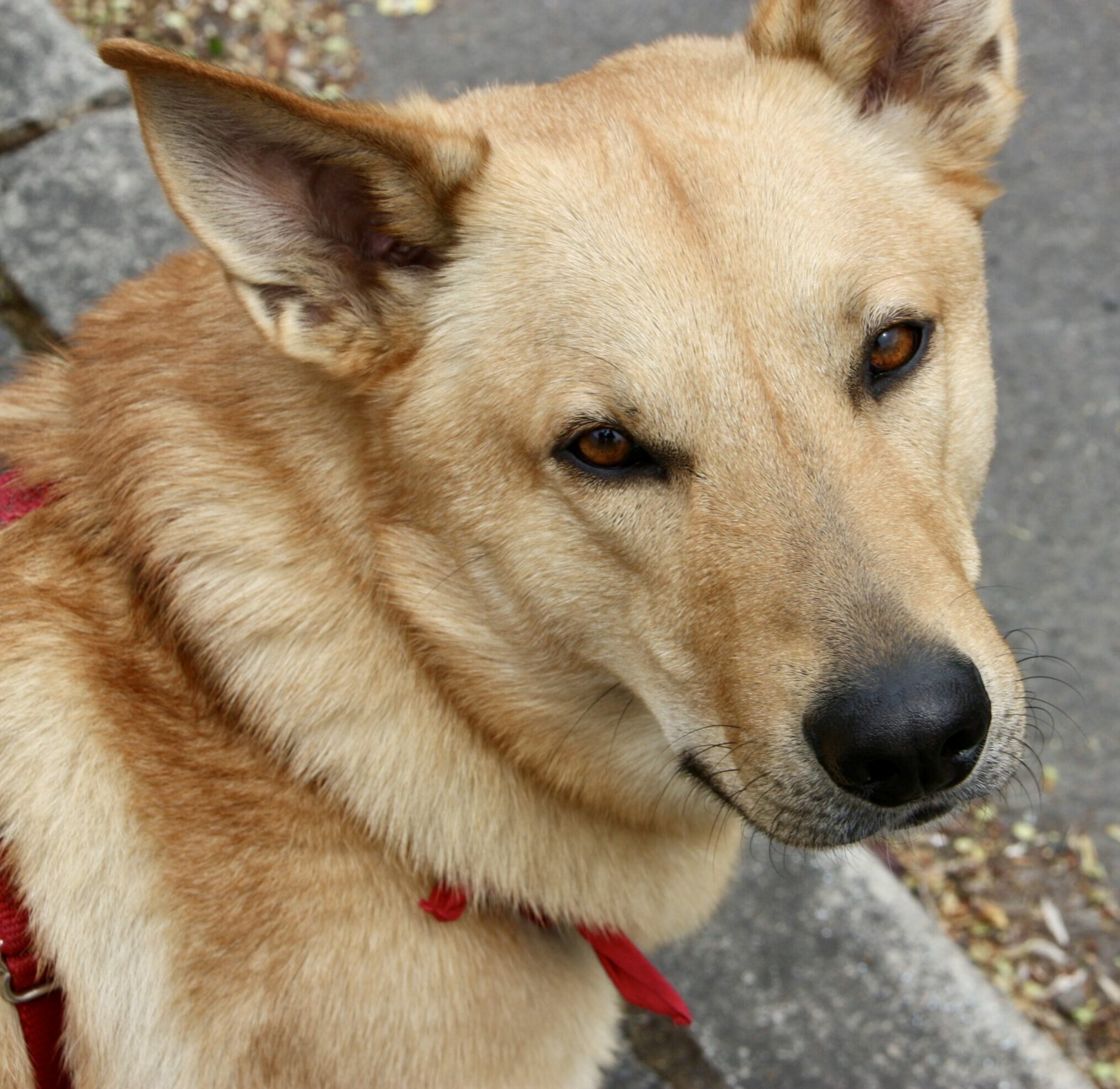
Obie. Definitely not a robot.
Up until that point, I thought that I was a pretty damn good dog trainer, channeling the confidence of many 20-somethings. Obie had dozens of cues, listened to me intently at all times, and trusted me to always have his back. He came everywhere with me, consistently earning the respect of the people and dogs in his orbit. He was a gentle, tender-hearted ambassador of the canine world. And I was honestly happy to accept praise for his behavior. I had put so much time into training him, and it showed. I was proud of the work I had done.
Then this Husky baby came along, and all that changed.
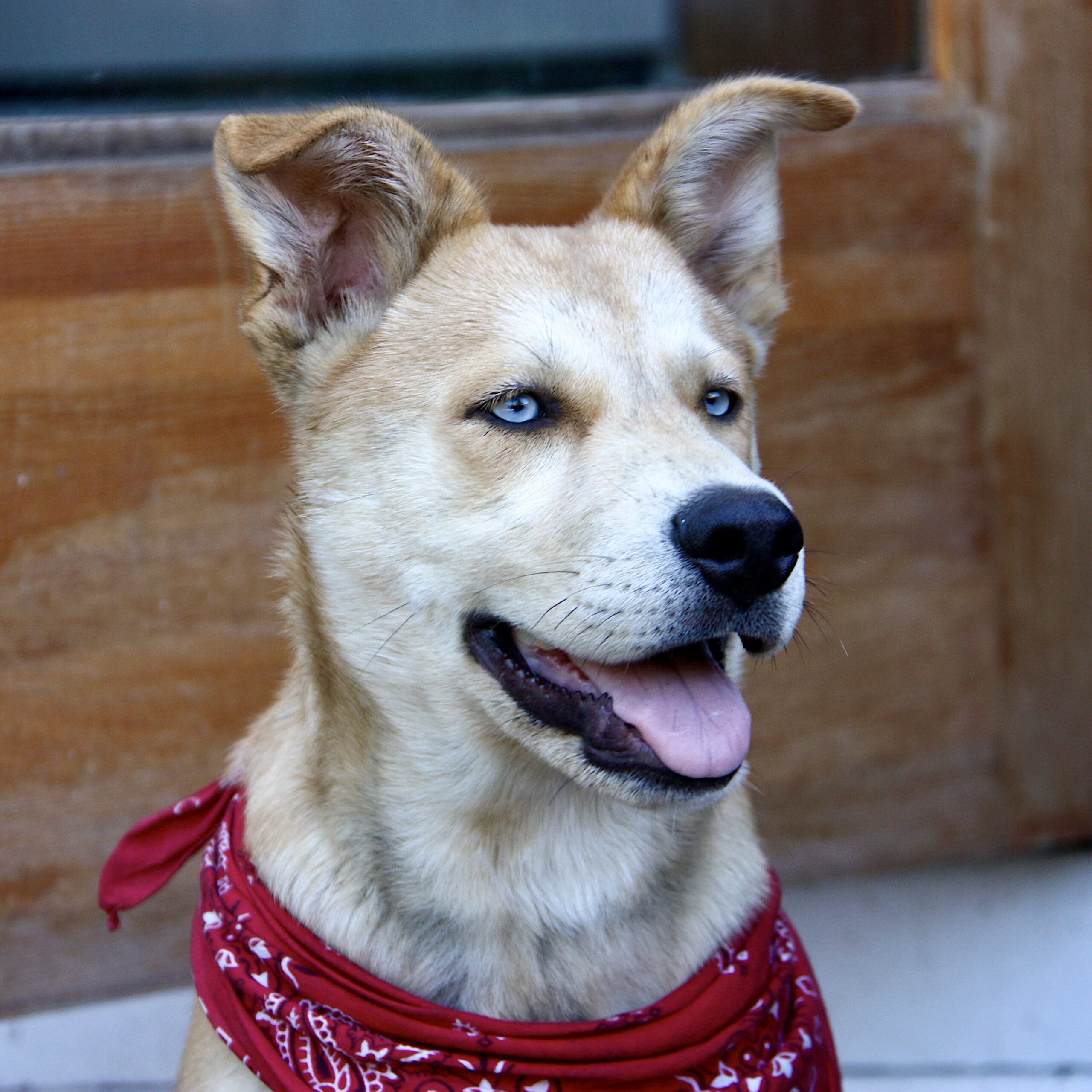
Timber. Also not a robot.
Dear reader, saying that Timber was a handful is…………an understatement. On the very first day I had him, he chewed a 3’x3’x3’ crater into my bed. I’m not kidding. He shredded his way through my bedding, mattress topper, and multiple feet of foam in the thirty minutes it took me to run to the pet store for supplies. He regularly opened the storm windows on the second floor of our house, busted out the screens, and ran around on the steeply raked roof, surveying the neighborhood for cats. He destroyed television remotes, iPhones, and any book he could get his teeth on. No upholstery was safe around this dog.
Timber was also gifted at escaping the backyard for joy runs; to this day, I still don’t know how he did it. (Though I can tell you that the task involved disassembling a metal baby gate, opening a door, jumping off of the deck, and then…scaling?… a smooth, wooden, six foot fence.) He received a direct hit by a skunk, an evisceration by a nutria, and a mouthful of porcupine quills, twice. He once swam a full mile in pursuit of a river otter, and he successfully dispatched several squirrels, a gopher, and a chicken. He bit cats. He could climb trees. He once ran across a busy four-lane highway, only to turn around and run right back, completely unscathed. He pulled me down and dragged me across the pavement on more than one occasion. He had incredible range and unlimited focus, sometimes finding a way to disappear for several hours at a time. He always came back to me, but he only did so when he was ready, a giant smile on his face, running so wildly that his own tongue would smack him repeatedly in the eyes.
I felt like a fraud. I had a professional secret, and his name was Timber. I thought I must not be giving him as much of my behavior modification time as he needed. I thought that I lacked the skills to actually build a strong enough reinforcement history for important behaviors. And poor Obie… he would always complete every task impeccably, and then cast his long-suffering gaze over me and his idiot little brother.
Whenever I would share my trials with others, my friends were quick to come to my defense. Timber was the problematic one, they would say, not me. Timber was “stubborn” or “unfocused” or “naughty.” I blamed myself and others blamed the dog.
Timber died of cancer in 2016, at seven years of age. He lit the candle at both ends and burned twice as bright for half as long. And though it’s still hard for me to actually admit, I can honestly say that he lived his life without ever, EVER, having a successful emergency recall while in the presence of prey.
I lost Obie in March of 2020, right before his fourteenth birthday. Obie had been by my side as I learned to Adult, started my own business, got married, bought a house, and had a child; losing him was impossibly hard, pandemic aside. I lived a few weird months without a dog, and then we adopted JoJo, a tiny, scrappy Havanese puppy. By that point in my career, I knew that a companion breed was the right fit for my family, and I daily marveled at this weird little mini-dog that had instantly captured my heart.
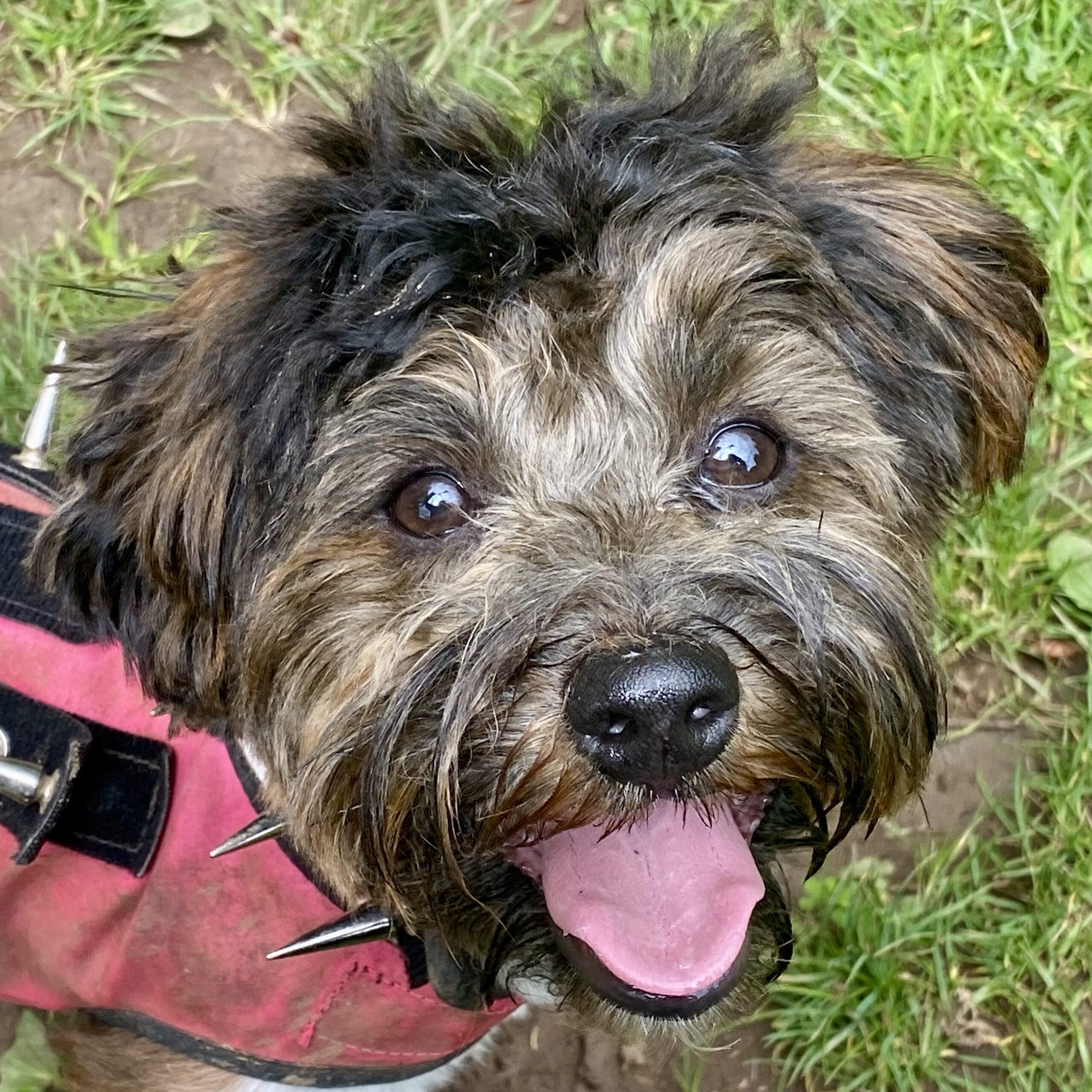
JoJo. I dunno, maybe a robot.
JoJo was sitting on my lap when I virtually attended Kim Brophey’s presentation at the Association for Professional Dog Trainers Conference in 2021. For a long time now, she said, the training industry has been in disservice to clients by promising a check we cannot reliably cash. We have argued that if we can just be smart enough, anything is possible. And that when we are not successful in behavior modification, we should blame the dog, in essence pathologizing pervasive behaviors that just won’t quit.
By the end of her talk, I was already an evangelist. Because she didn’t really have to convince me of anything. She only had to call attention to what I already knew was true, but was not previously accessible to me.
Just about every trainer knows that some dogs are not the right fit for some people. We are all aware of the square-peg-round-hole analogy, specifically when it comes to working breeds. We have all listened knowingly and ruefully to the case studies of Border Collies nipping their human siblings. Of course a household containing erratic mammals wasn’t an ideal home for a breed that was literally created to control the movements of erratic mammals.
Through taking the full L.E.G.S. certification course, however, I was finally able to more implicitly understand how the square-peg-round-hole analogy falls short. Viewing the human-dog relationship through that particular idiomatic lens means that the situation is… hopeless. There is no way to make the damn peg fit. Everyone—human and canine alike—can only fail. What kind of message is that to give to the Border Collie owners, who genuinely love their dog and are trying to do right by her? How does that help us be in service to the people we serve? Sure, maybe those folks should have adopted a Toy breed, but hindsight is 20/20 and it certainly does not help the people or the dog living together now.
As an alternative, the L.E.G.S model uses a key-and-lock analogy, wherein the key is the dog’s niche (their genetically crafted role in their environment), and the lock is the dog’s environment. Through this frame, it’s much easier to see that a dog is the way they are because thousands of years of natural selection and hundreds of years of artificial selection have shaped her to be the absolute perfect fit for her environment. And that if we truly want to change a dog’s behavior, then we must provide them with either their intended environment (less likely for American pet dogs) or with comparable environmental affordances that still allow her to fulfill her role (much more likely for American pet dogs).
Right now, as with the case of the Border Collie nipping the children and a vast majority of American pet dogs, we are trying to reshape the key, the dog itself. When actually, it is far more effective to provide a new lock, or an environment in which the dog can thrive. Dogs are highly evolved social animals, suffering greatly from captivity without environmental enrichment. Dogs living in captivity do not, can not, and should not naturally fit perfectly into our human lives without intentionally devised environmental opportunities.
Even though we are both social mammals and have a heck of a lot in common with dogs, dogs are separate species from Homo sapiens, with biological imperatives that often fail to align with the environment we provide for them. Timber wasn’t a bad dog. I wasn’t a bad trainer. Instead, Timber was just an exuberant and unique member of the Natural Dog category, doing the things that Natural Dogs and Timber Dogs do best in the environment they are given.
When the L.E.G.S. in Motion Conference tickets became available, I purchased both my ticket to the conference and my flight to Asheville on the very same day. Walking into that large room—floor to ceiling windows, exposed brick walls, a wooden truss ceiling, a million fairy lights—felt like a homecoming.
Instead of hubris, I found humility among the trainers assembled. As humans, we simply must accept that we do not have all of the answers. We must commit to doing our very, very best to find the breathtakingly beautiful pulse of what makes us excellent at being human, what makes dogs excellent at being dogs, and how we can provide an environment in which everyone is set up for success. And to keep learning, to keep learning, to keep learning. Our brains are at once magnificent and feeble, and that’s ok.

Would you like help in building a strong relationship with your dog? Cuz that's our jam. Please let us know if coaching would be helpful, either in-person or virtually. (It will, I promise.)

